TEMPORALITIES OF
SOCIAL
INSTITUTIONS
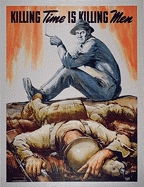 Social institutions are the broadest organizers of individuals' beliefs,
drives, and behaviors. Evolving to address the separate needs of society
(e.g., the military institution out of the need for defense; the family
out of the social needs for procreation, socialization, and intimacy),
social institutions are free-standing social units with their own inner
dynamics and rhythms. Like separate musical scores, each has its own melodies,
harmonies, and rhythms. The more powerful a given institution is in any
given society, the more likely its times influence everyday life. Many
researchers (see, for instance, the Foundation
For the Study of Cycles) have detected cyclical patterns of historical
change in these chronosystems.
Social institutions are the broadest organizers of individuals' beliefs,
drives, and behaviors. Evolving to address the separate needs of society
(e.g., the military institution out of the need for defense; the family
out of the social needs for procreation, socialization, and intimacy),
social institutions are free-standing social units with their own inner
dynamics and rhythms. Like separate musical scores, each has its own melodies,
harmonies, and rhythms. The more powerful a given institution is in any
given society, the more likely its times influence everyday life. Many
researchers (see, for instance, the Foundation
For the Study of Cycles) have detected cyclical patterns of historical
change in these chronosystems.
At the personal level, these institutions come to control the social
rhythms of life in a process called entrainment. As described by Joseph
McGrath and Janice Kelley in Time and Human Interaction: Toward a Social
Psychology of Time (Guilford Press, 1986):
In biological study, the term
"entrainment"
means, roughly, that an endogenous body rhythm has been "captured,"
and modified in its periodicity and its phase, by an external cycle with
a rhythm near to the one the body rhythm would have had (in its "natural"
endogenous form) had it not been thus captured and modified. ...[T]he particular
biological cycles most often used to exemplify entrainment are the circadian
rhythms that become entrained to the day-night cycle of life on this planet...It
is such temporal entrainment of social and organizational behavior--as
distinct from the entrainment of physiological and psychological processes--that
is of central concern within a social psychology of time (pp. 43,48).
So how do Americans really spend their time? See the U.S. Department of
Labor's American Time Use Survey, which "measures the amount of time people
spend doing various activities, such as paid work, childcare, volunteering,
commuting, and socializing."

FAMILY TIMES
What is the meaning of family time? Unlike the past, it rarely is
interwoven with work time as when families would together farm or operate
some small family feed or grocery store. When we nowadays think of family
time it is more in the realm of leisure time. And perhaps this intersection
is what underlies many of the problems now besetting the institution.
The first institutional time system, or "chronosystem,"
that we're conditioned by is the family. It is here that we receive our
first temporal socializations, specifically, learning how to synchronize
one's biological processes with social timetables of others (the feeding
schedule becomes the first social constraint). Later the child learns how
different activities have their own temporal demands, and it is here that
we can see how time is employed by institutions to demarcate their sphere
of coordination and control.
Internationally, there are some interesting differences in the desire for
more family time than one has. In their analysis of
responses of over twenty thousand randomly selected workers from 27 in the late 1990s (data from the
1997 International Social Survey
Programme),
David Blanchflower and Andrew Oswald found the following percentages agreeing with the statement
"I would like to be able to spend much more with my family": US 46%, France
41%, Philippines 40%, Portugal 39%, Israel (Jews) 37%, Great
Britain 36%, Slovenia 34%, East Germany 34%, Czech Republic 33%, Sweden 32%,
Russia 31%, Poland 30%, Norway 27%, Denmark 26%, Hungary 26%, West Germany 26%, Canada
26%, Cyprus 26%, New Zealand 26%, Israel (Arabs) 25%, Switzerland 23%, Italy
21%, Netherlands 18%, Bulgaria 14%, Japan 9%, Spain 8%, and Bangladesh 5%.
THE LIFE-CYCLE OF FAMILY RELATIONSHIPS
One strategy of sociologists is to take a life-cycle
approach to family systems, following a couple from courtship and marriage
through the death of one spouse. This approach sensitizes us to the various
timetables of family life and how they have changed
historically:
- the timetables of courtship. There are, for instance, normative
times for dating relationships to become "serious" emotionally
and sexually. And do we not tend to smirk at engagements of two weeks or
ten years in length? One interesting trend of the new century is the
emergence of
speed dating,
a getting-to-know-you event where in one evening men and women may have twenty
six or eight minute "dates."
- the age differences of spouses. One measure of gender bargaining
power in a relationship is the age advantage of the male. Over the course
of the twentieth century, this advantage has declined from 4 to 2 years,
despite the second marriages of males to their "trophy" wives.
- the timetables of first marriage. In 1890 in the United States,
males first wed at an average age of 26.1 years and females at 22.0. By
1959, these ages had declined to 22.5 and 20.2, respectively. In 1994,
they had increased to 26.7 and 24.5.
- when the first child arrives. In the recent past, society frowned
on those born outside of marriage and on births occurring within nine months
of "shotgun weddings." Three highly publicized contemporary fertility
phenomena involve children having children, the sizable percentage of women
having children outside of marriage (now the case in three out of ten births,
with the greatest rate among women 20-24 years of age), and the midlife
births of career women sensing their "biological clocks." The
pregnancy rate for Americans 15 to 19 years old stands at 96 per 1,000,
compared with 14 per 1,000 in the Netherlands, 35 in Sweden, 43 in France,
44 in Canada, and 45 in England and Wales. According to a National
Survey of Family Growth, of the nearly 16.5 million births to ever-married
women that occurred from 1983 through 1988, approximately 5.8 million,
or 35 percent, were unintended. Of those, about 30 percent were unwanted,
and the other 70 percent were mistimed (wanted at a later time).
- when the last child arrives. In 1960, the average age of an American
mother upon the birth of her last child was 26.1 years. With fertility
treatments, women as old as 61 have given birth in the 1990s. Such timings
determine such things as when the "empty nest" period intersects
the mother's biography (also affecting this event is the lengthening period
of children remaining with their parents: by the early 1990s, one out of
three single men between the ages of 25 and 34 was living with one or both
parents).
- when one's spouse dies. Whereas for most of American history one
spouse had died before the youngest child left home, owing to life-expectancy
increases the average age at which a female is widowed has increased from
53 years in 1890 to over 66 years currently.
SPOUSAL TIMES
A 1987 survey (Kingston, Paul W., and Steven L. Nock. 1987. "Time
Together Among Dual-Earner Couples." American Sociological Review
52:391-400) of wives from dual-earner couples say they and their husbands
spend:
- 44 minutes daily watching television together
- 36 minutes daily in homemaking and personal care
- 33 minutes daily eating meals together
- 12 minutes daily talking with each other
The same year on ABC's "20/20" (Oct. 30, 1987) the observation
was made about how, without many role models outside of their generation,
contemporary dual-career couples are receptive to the recipes and advice
of numerous experts. There are self-help manuals, such as The Working Relationships--a
work book employing many corporate planning techniques to running a marriage,
recommending such activities as defining short-term and long-term goals
in a personal relationship, staging annual summits that set aside 48 hours
to concentrate on such subjects as love, home, and creating a "priority
action plan." One problem, of course, is applying hard, rational,
bureaucratic management principles to a relationship traditionally (at
least for the past two or three generations) based on romantic and spontaneous
ideas. But lives have become so busy, so hectic, that there is a need for
structure and organization in order to even get by. And then add on top
of this what is perhaps the most unpredictable, most spontaneous, most
time-demanding, and least organizable of all social elements: young children.
Click here to see spousal differences in time
spent in the household division of labor.
A major research tradition in spousal time involves the relationship
between the length of marriage and the marital satisfactions of men and
women. Things not working out? Nowadays, because of the destigmatization
of divorce and the rise of no-fault divorce laws, people have more of an
"out" (or at least more of a legal out--desertion rates were
high in the past) than was the case. According to the National Center for
Health Statistics, the following was the percentage of all divorces by
duration of marriage in 1987:
| MARRIAGE LENGTH |
% OF DIVORCES |
| < 1 YEAR |
4% |
| 1-4 YEARS |
34% |
| 5-9 YEARS |
26% |
| 10-19 YEARS |
25% |
| 20+ YEARS |
12% |
PARENT-CHILD TIMES
During the 1970s, the the midst of increasing female participations
in the labor force, psychologists came up with the concept of "quality
time". This philosophy behind this notion, allaying the guilt
often experienced by working mothers, was that it is not the quantity but
quality of time parents spend with their children that counts. It came
to be thought that if enough special attention was given in a designated,
structured amount of time--much like structured business time, where goals
are set and then individuals strive to meet them--the amount of time between
parents and children would have no bearing on the quality of bonding between
them. Good thing. According to Penelope Leach, Benjamin Spock's successor
in the best-selling "how-to" manual for child-raising, claims
that the average time spent between parents
and children has dropped 40 percent in the past twenty years (ABC newsmagazine,
Aug. 18, 1994).
This type of time is difficult to schedule for it arises from spontaneity.
"Just as parents can't dictate the terms for special moments with
their children, they can't always predict when their children will most
need them" (Parents, 1983). But children's time is on a schedule of
its own and frequently doesn't mesh with that of their parents'. Thus,
quality time occasionally is not achieved simply because children aren't
conscious of the need for "quality time"--they don't realize
that they are supposed to experience it.

SCHOOL TIMES
I will always remember a sign that hung directly under the clock
in one of my middle school classrooms: "Time Will Pass But Will
You?" A haunting thought for the perpetual clock-watchers of the
room.

Of the spectrum of social functions provided by education, one of
the most central is its inculcation of social rhythms. It is here that
the young child is first subjugated to the universalistic time demands
of the broader society and comes to have his/her rhythms of the day, the
week, and the year shaped by the obligatory student role. In the instance
of homework assignments, as Wilbert E. Moore observed in Man, Time,
and Society, "the school may extend its temporal control even
beyond its physical boundaries and formally allotted hours, with consequent
problems for the child and therefore for adults of temporal allocation
among family, school, and play or peer-group activities" (1963:24).
The rhythms of this institution, as we will see, echo broadly across
many facets of both self and society. At the personal level, they shape
individuals' identities and sense of self- worth. At the social level,
the time individuals spend in educational systems is used as a means for
sorting and certifying them in terms of their
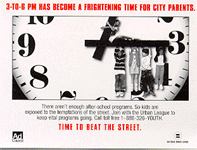 adequacy for work roles:
greater school time translates into a higher status level entry into the
work world. Ironically, society has not kept pace in redesigning jobs to
take advantage of its increasingly educated workforce, leading to over-education
and underemployment, worker alienation, and boredom. From the social level,
schools can also be understood as an abeyance mechanism, a holding
pattern designed to keep the young out of an already crowded workforce.
adequacy for work roles:
greater school time translates into a higher status level entry into the
work world. Ironically, society has not kept pace in redesigning jobs to
take advantage of its increasingly educated workforce, leading to over-education
and underemployment, worker alienation, and boredom. From the social level,
schools can also be understood as an abeyance mechanism, a holding
pattern designed to keep the young out of an already crowded workforce.
For most American youngsters, school
is the major source of lessons about bureaucratic time--lessons in
that genre of social rhythms which, if observed, allow one to survive and
thrive in American adult society. For the educational neophyte, the shift
from the more spontaneous times of family life to the thoroughly structured
times of school is a difficult transition indeed. Consider the following
lessons:
- the necessity of being punctual. Lateness is defined as being "tardy,"
a punishable offense. Further, school times are totally arbitrary. Lunch
time for my elementary school son begins precisely at 11:51 a.m.
- how time can be used as both punishment (students "do time"
or are placed in "time out" for failing to conform to rules)
and reward (as when "released" early for having done a good job).
- the importance of being "on time" in terms of one's educational
biography. Schooling is rigidly age-based. Age 10 and still in the second
grade? Loser. "Skipped" a grade? Winner. Finished college before
you are thirteen? You make the newspaper. Educational timetables instill
long-range thinking, providing individuals with a normative path that takes
one from early childhood to early adulthood.
- precise temporal realms for specific activities, leading to one-at-a-time
monochronic thinking. Each subject matter receives its own niche in the
flow of school hours. Here middle class students have a distinct advantage
over their working class counterparts. The latter, being more likely to
have grown up in temporally unstructured homes, do not understand time
and feel powerless when placed within time-slotted school environments.
Little Billy, for instance, has not finished his coloring during art time
and feels resentment when told to put away his crayons for reading time.
Given the centrality of education to the institution of work and
given several decades of declining standardized test scores, which are
compared with international levels (in the mid-1980s, the United States
ranked 49th in illiteracy out of 158 countries), it is not surprising that
school times have become a matter of considerable political significance.
According to a 1994 study by the National
Education Commission on Time and Learning, American high school students
spend only 41 percent of their school days on academic subjects and secondary
school students spend only about three hours per day on core academics.
In total, American students spend about 1,460 hours studying subjects like
math, science and history during their four years in high school. Their
Japanese, French and German counterparts spend 3,170, 3,280 and 3,528 hours,
respectively. According to the 2004 National
Survey of Student Engagement, about how college undergraduates spend their
time, students only spend half the time preparing for class as faculty expect.
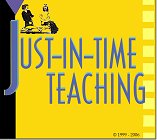 In the state of Texas, this matter of the quantity of time devoted to academic
matters in the public schools was to become the holy cause of several powerful individuals,
most notably for businessman Ross Perot. In 1981, the 67th legislature passed House Bill 246,
Section 21.101 of which specified that public school teachers be given precise times to devote
to various subject matters. This was implemented in 1985 in Chapter 75 (of Title 19) of
the Essential Elements of the Texas Legislative Code. Many educators were not happy with
the breakdown, perceiving that language arts received the lion's share of time while the natural
and social sciences were short changed. But even more significantly, one consequence was to
be the segregation of subjects so as to ensure the teachers' new temporal accountabilities.
Math, for instance, became divorced from science and social studies; connections between
disciplinary endeavors were no longer being actively addressed because they could not be
temporally measured. Such unintended developments were to be the seeds of the curricular
plan's demise.
In the state of Texas, this matter of the quantity of time devoted to academic
matters in the public schools was to become the holy cause of several powerful individuals,
most notably for businessman Ross Perot. In 1981, the 67th legislature passed House Bill 246,
Section 21.101 of which specified that public school teachers be given precise times to devote
to various subject matters. This was implemented in 1985 in Chapter 75 (of Title 19) of
the Essential Elements of the Texas Legislative Code. Many educators were not happy with
the breakdown, perceiving that language arts received the lion's share of time while the natural
and social sciences were short changed. But even more significantly, one consequence was to
be the segregation of subjects so as to ensure the teachers' new temporal accountabilities.
Math, for instance, became divorced from science and social studies; connections between
disciplinary endeavors were no longer being actively addressed because they could not be
temporally measured. Such unintended developments were to be the seeds of the curricular
plan's demise.
THE LENGTH OF THE SCHOOL YEAR AND THE SHIFTING TIMES OF THE
SCHOOL DAY
The school time gap, like the supposed "missile gap" of
the 1960s, has become a favorite topic of media exposes. As of 1996, the
average length of the school year in the United States is 180 days, compared
to 186 days in Canada and 243 days in Japan. Internationally, Americans
students are now perceived to be as temporally disadvantaged as were African-American
students in Missippi in 1940, when their school year was but 124 days while that
of whites was 160.
Given this self-imposed 180-day school year limit, coupled with increasingly
crowded classrooms (guaranteeing greater variety in student learning rates within a class),
complaints against the messages delivered and quality of teaching, and the exponential growth
rate of knowledge, one can understand why American schools find themselves experimenting in
chronoeducation in their race against time. With "block scheduling", classes have
been lengthened, typically from 40 to 66 minutes. As the school day is no longer long enough
to cover all subject matters, class schedules become "rotated" with students taking a given
subject matter not only on different days of the week but different times of the day. Such
shufflings are legitimated, in part, with the argument that given differences in the times when
students are most alert and most receptive to certain types of knowledge (Is there a best time of
day to take math? art? And how might schools accommodate students like those at this
university, where four out of ten identify themselves as "evening people" and three out of ten as
"night owls"?), the temporal playing field becomes leveled out.
In addition to these increasingly complex school times let's not forget the year-round
schooling movement, backed by such proponents as San Diego's
National Association for Year-Round
Education.
What does one do as a working parent with two children, one in elementary and the other in
middle school, both on year-round academic calendars but different in their six-weeks-on/two-
weeks-off cycle? Gone with this format is the academic rhythm of old (which was based on a
19th century agricultural-economic schedule), featuring the wonderful closure of a school year
ending and the "clean slate" of a new school year beginning.
Well, if you managed your time correctly in primary and secondary school it could
be college time. A new admissions strategy is to make an early application to one's first
choice. The game goes thusly: one makes an early application to an institution and in
exchange for the promise that one applies no where else one will be notified "early" about
acceptance or rejection. By 1997, sizable proportions of the entering classes at the most
selective schools were being so accepted: 50% at Harvard, 35% at Dartmouth, and 30% at the
University of Virginia. One interesting consequence is that those who take advantage of the
early admission process are more likely to be white and affluent. Those from minority and less
financially secure families tend to apply later, desiring to compare financial aid packages, and
thereby diminish their chances for admission as those from the early applicant pool fill the
available slots (source: Ethan Bronner, "Early admission process alters colleges, to the regret of
some,"New York Times, Dec. 26, 1997).
THE LESSON OF SPEED
In Time Wars, Jeremy Rifkin writes:
In our educational system, a premium is placed on how fast we can
recite an answer or solve a problem. Pondering, reflecting, and musing
might well be encouraged in other cultures but play little or no role as
modes of thought in the American educational system. Keeping up requires
quick absorption of material and even faster recall. Children are taught
to compete with the clock in classrooms across the country. Exams are cued
to time deadlines and achievement is measured by how many answers can be
completed in the time allotted. Our society is unwavering in its belief
that intelligence and speed go together and that the bright child is always
the fastest learner.
WEEKLY CYCLES OF THINKING ACADEMICALLY
Visitors to a number of my websites are monitored. I have found that
regardless of subject matter--whether it be death, social psychology, social
gerontology or
time--the "hits" all have basically the same weekly pattern:
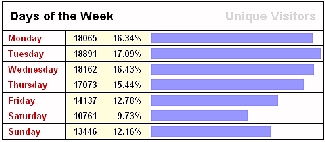
Tuesdays are always the peak days, after which begins the
slide towards the weekend. Wednesdays are comparable to Mondays, as are
usually Sundays with Fridays.

THE SACRED TIMES OF RELIGION
All mankind is of one author, and is of one volume; when one man
dies, one chapter is not torn out of the book, but translated into a better
language; and every chapter must be so translated; God employs several
translators; some pieces are translated by age, some by sickness, some
by war, some by justice; but God's hand is in every translation, and his
hand shall bind up all our scattered leaves again for that library where
every book shall lie open to one another.
--John Donne, Devotions
Consider the variety of ways religion involves time. There are the
escapes from daily routines during Holy Weeks or observances of the Sabbath, the
Book of Hours of the
Middle Ages, the religious rituals marking the various phases of one's biography (e.g.,
the baptismals following birth, the transitions into adulthood such as
the bar mitzvahs, marriage ceremonies, and the funeralizations following
death), the "born again" experiences engendered by religious
faith, and the saints associated with each day of the Catholic calendar.
The first historians were strongly religious individuals. The precision
and reliability of our clocks stems from medieval monks' concerns with
praying on time. A key temporal legacy of early Christianity to the West
is a linear conception of time, from which such ideas as that of progress
and evolution evolved. As Richard Morris (Time's Arrows: Scientific
Attitudes Toward Time, 1985:11) pointed out:
The early Christian writers stressed the importance of individual
historical events that would not be repeated. History, they said, did not
move in cycles. On the contrary, there had been a Creation at a particular
point in time. Christ had died on the Cross but once, and had been resurrected
from the dead on but one occasion. Finally, at some point in the future,
God's plan would be completed, and He would--once and for all- -bring the
world to an end.
And then, of course, there's our squirreliness
over the millennium.
TIMES SACRED AND PROFANE
 Religious time is set up against profane time, time as wear-and-tear,
time as decay, time as death. The time frame of ultimate existence and
of moral truths must be of a different realm, and this is the sacred. Not
only does this supramundane orientation to time make death a transition
instead of an ending, but allows religions to conceptualize and integrate
the net sum of human activity. Our separate endeavors, as well as those
of our ancestors and successors, are but unrelated discrete events, much
like the separate notes of music, unless there's some overarching frame
of reference to integrate them into some harmonic whole. Part of the religion's
role is to give this broader temporal perspective to everyday life, to
provide the sense of coherency and comprehensibility to both personal and
social experiences, and to place generations now alive in context of those
dead and those yet to be born.
Religious time is set up against profane time, time as wear-and-tear,
time as decay, time as death. The time frame of ultimate existence and
of moral truths must be of a different realm, and this is the sacred. Not
only does this supramundane orientation to time make death a transition
instead of an ending, but allows religions to conceptualize and integrate
the net sum of human activity. Our separate endeavors, as well as those
of our ancestors and successors, are but unrelated discrete events, much
like the separate notes of music, unless there's some overarching frame
of reference to integrate them into some harmonic whole. Part of the religion's
role is to give this broader temporal perspective to everyday life, to
provide the sense of coherency and comprehensibility to both personal and
social experiences, and to place generations now alive in context of those
dead and those yet to be born.
One way humans have attempted to participate in this sacred time
is by replicating the activities of one's ancestors. What is sacred is
the order that links our activities with an overarching meaning. Sacred
time is the collapse of the past and future into an eternal now so that
the heroics of our ancestors and our descendants are forever part of the
present (as opposed to profane time, which is time as decay or entropy).
To accurately repeat the rituals of one's ancestors, as in a traditional
ceremonial dance, is to participate in sacred time. In this sense, the
expeditions of Thor Heyerdohl and the duplication of the voyages of the
Godspeed (the ship carrying tradesmen and farmers to Jamestown in
1607) and the Mayflower, while supposedly being scientific and historical
enterprises, are -in fact- religious rituals. In addition to religious
ritual, religious artifacts also play a role in this connecting of the
generations. To further achieve this sense of continuity (the experience
Alex Halley captured in Roots), Catholics often pass down through
generations of family members such things as baptismal robes, confirmation
veils and coffin crucifixes, while Jews pass down the Talit, Tefillin,
Kiddush Cup and Menorah. The family Bible is not only passed on, but is
often the place where family genealogical records are maintained.
To even establish such intergenerational continuities requires that
the identities of the dead be remembered. And, again, religion has been
a major institution source of such recollections. The Jews, for instance,
have the Chevra Kevod Hamet (Society to Honor the Dead). Churches maintain
records of their baptisms, marriages and funerals. But it is the Mormon
church which has perhaps gone to the greatest lengths in this country to
preserve the memories of the deceased. Believing that you must "seek
after your dead" to insure a reunion with them in the Celestial Kingdom,
not only must your own dead be recalled, but (since no human can be less
closely related to any other human than approximately fiftieth cousin)
those of everyone else as well. The Genealogical Society of Utah houses
this "family of men."

- Timeline: Origin of Major Religions
- The Rule of Benedict temporal discipline
at the Order of St. Benedict's
- Ecclesiastical
Calendar: Enter a Year...
- Easter
in Cyberspace: A Christian Perspective
- Ignatius
Donnelly and the End of the World
- Current Events and End Times
Prophecy
- End Times Prophecy
- A Brief History of the Apocalypse: 2800 B.C.-Now
- THE RAPTURE INDEX
- Number
of seconds till Millenium-2001
- Kearl's investigations into Americans' faith in an
afterlife
In the West, matters of science and religion are typically understood to be of two
separate domains, one of the material world and the other of the immaterial. For an interesting
attempt to fuse the temporalities of these two domains (and thereby reveal commonalities
between Darwinism and creationism), see Dr. David Bryson's Anthropic
Timetable, wherein the history of the universe is analyzed in terms of centuries taken to
various powers: century5=birth of universe, century4=mid-
Cretaceous, century3=human exodus from Africa, etc.

WORK TIMES
"Remember that time is money."
--Benjamin Franklin
"For a businessman, time is money, but for an academic
or artist, money is time."
--Lawrence Rosen
If you want work well done, select a busy man -- the other
kind has not time.
--Elbert Hubbard
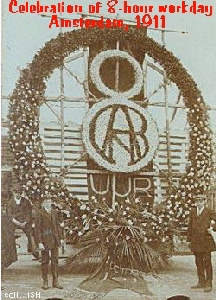
As can be gathered from the TimeWork
Resources Page, of all institutions it may well be work times that
have the most pervasive influence on cultural time systems. At a macro
level, economic cycles are thoroughly interwoven with demographic and political
cycles. At the individual level, since work provides the archetype of reality
(with all other provinces of meaning being but modifications), work time
has come to predominantly shape both biographical time and one's everyday
timetables. To read one of the classics on time and work, see E. P.
Thompson's "Time,
Work-Discipline, and Industrial Capitalism"
Beginning in the 1960s appeared a new international box score, this one
supposedly gauging the industriousness of a people: annual average hours spent
on the job. The Japanese, with their 6-day workweek, were the world
champs, and their numerous hours at the workplace coincided with the country's
growing trade surplus. American news agencies carried stories of Japanese
workaholics shunning vacations. In 1960, the Japanese worker was logging
2,432 hours a year. Their hours decreased with growing prosperity,
attempts of the Labor Ministry to get the populace to relax, and a new
generation of workers--the shinjinrui--born in
affluence and less enamored with total dedication to the company.
In 1988, the Japanese worked an average of 2,111 hours; in 1994, 1.904 hours; in
2000, 1878 hours.
 Like the "missile gap" and other perceived shortcomings in
international competitions, the United States accepted the time wars
challenge. By 1989, according to the Economic Policy Institute,
American workers were putting in 138 hours more on the job than they did in
1969. While European workers were enjoying five weeks of paid vacation,
their American counterparts had but 16.1 days. In 2001 came news from the
U.N. International Labor Organization (Key Indicators of the Labor Market
2000-2002) that Americans were working 36 hours more, almost a full
workweek, than they were in 1990. They were now closing in on the Republic
of Korea and the Czech Republic for the international hour championship, working
100 hours (or 2-1/2 weeks) more than their Japanese counterparts, 250 hours more
than British workers, and 500 hours (or 12-1/2 weeks) more than German workers.
Like the "missile gap" and other perceived shortcomings in
international competitions, the United States accepted the time wars
challenge. By 1989, according to the Economic Policy Institute,
American workers were putting in 138 hours more on the job than they did in
1969. While European workers were enjoying five weeks of paid vacation,
their American counterparts had but 16.1 days. In 2001 came news from the
U.N. International Labor Organization (Key Indicators of the Labor Market
2000-2002) that Americans were working 36 hours more, almost a full
workweek, than they were in 1990. They were now closing in on the Republic
of Korea and the Czech Republic for the international hour championship, working
100 hours (or 2-1/2 weeks) more than their Japanese counterparts, 250 hours more
than British workers, and 500 hours (or 12-1/2 weeks) more than German workers.
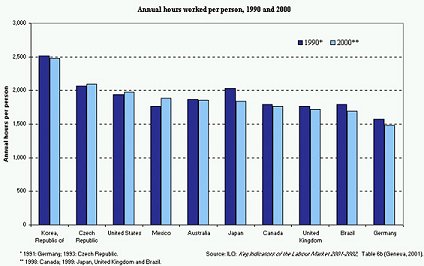
Other work time topics:
- cycles of boom and
bust. (Also
see cycles' summary from
Harvard, U.S. Business
Cycle Indicators, economic
cycles of American agriculture 1776-1990, and don't forget taking a look at the Consumer Price Index Page).
- how the economy can grow too fast or too slow. In 1994, on the eve
of the Fed's raising the interest rate for the sixth time of the year,
we were informed by economists that the rate of economic growth, 3 percent,
was too fast and should be closer to 2.5 percent. Their logic is that if
economies grow too fast supplies will become limited, which will lead to
an increase in prices and--eventually--worker demands for increased salaries.
In other words, speed causes inflation.
- how with the evolution of capitalism time metamorphosed into a commodity,
something to be wasted, shared, or saved.
- time as a basis of reimbursement across occupations and social classes--e.g.,
being paid by the hour instead of being salaried.
- the mobility time-tables of different professions and occupations
(my hypothesis is the higher the social status of the occupation, the later
one "peaks" in one's profession).

- industry type by degree of future time orientation (i.e., having
10-, 20-, even 30-year plans for the future).
- how time can legitimate a business, e.g. "Serving San Antonio
Since 1896" vs. "Since 1991."
- the social movements for a
thirty-hour or thirty-two-hour
workweek or how about a four-hour day--or at least a
Shorter Work Time
- how companies can either grow too fast or too slow.
- temporal
recognitions of various occupations and professions, such as National Secretary's
Day.
- just in time
manufacturing.
- the emergence of flex-time and alternative work schedules (20
percent of American workers do not work a M-F 9-5 week), correlated
with the entry of women into the workforce and the rise of 24-hour shopping and
financial services.
- the history of the mandatory retirement
controversy.
- "Whistle While You Work: Putting the rhythms of work to music.
As work shifts from the physical to the mental, what are the songs of post-industrial
laborers?
- and, of course, deadlines. Webster's Dictionary defines the
word "deadline" as "a line drawn within or around a prison
that a prisoner passes only at the risk of being instantly shot,"
but few people today recognize this "spatial threat" as the word's
primary meaning, Professor Yi-Fu Tuan observed during a centennial conference
on "Chronotypes: The Construction of Time" (Stanford University,
1988). "Almost all the deadlines we know have to do with time,"
and the wristwatch has become our "symbol of enslavement," he
said.
- For other ideas, see the results of Shell's 2000 survey, "Our
Nation's Workers In A Race for Time"

LEISURE TIME
Millions long for immortality who do not know what to do
with themselves on a rainy Sunday afternoon.
--Ertz's Observation
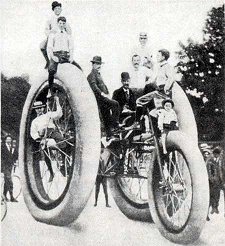 Karl Marx argued that the "raising of wages leads to overwork
among the workers. The more they want to earn, the more they must sacrifice
their time and perform slave labour in which their freedom is totally alienated...In
so doing they shorten their lives" (1964:71). "Thus, even in
the state of society which is the most favorable to the worker, the inevitable
result for the worker is overwork and premature death, reduction to a machine,
enslavement to capital" (p.73).
Karl Marx argued that the "raising of wages leads to overwork
among the workers. The more they want to earn, the more they must sacrifice
their time and perform slave labour in which their freedom is totally alienated...In
so doing they shorten their lives" (1964:71). "Thus, even in
the state of society which is the most favorable to the worker, the inevitable
result for the worker is overwork and premature death, reduction to a machine,
enslavement to capital" (p.73).
Nearly three-quarters of a century later, Harold Wilensky observed
that "Despite an increasing age of entry into the labor force and
a decreasing age of exit, men today work more years over the life cycle
then they did in 1920" (1961:36). Taking note of the large number
of rest days and holidays historically observed, he argues that the modern
worker has achieved about the same amount of leisure as his counterpart
in the Thirteenth century. According to archaeologists, hunters and gathers
spent an estimated 3.5 hours/work per day.

Click here to see
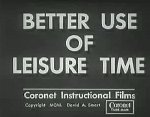
Academy of Leisure
Studies - From Cornell University, Games We Play: Pastimes and Paradigms

- Leisure Studies
WebPage
- Americans'participation in various leisure activities, 1997 from infoplease.com
-
Nadya Labi's "Burning Out at Nine?" Article summarizing the
University of Michigan's Institute for Social Research findings how children's leisure time had
declined from 40% to 25% of the day between 1981 and 1997.

CONSUMPTION TIMES
Americans spend more of their leisure time shopping (5.7 hours/week,
including travel) than any other activity with the exception of television
watching (17 hours) and eating (7.9 hours) (data from an unpublished 1985-87
study by John P. Robinson of the University of Maryland Survey Research
Center). Consuming brings its own rhythms:

- the ever-expanding "Holiday Season," with decorated Christmas
trees now appearing in late September in department stores (read about Saturnalia,
the Romans' precursor to Christmas);
- there are new consumptive "seasons," such as the
"back-to-school,"
"prespring," and "prefall" seasons (the latter, starting
in early June, representing anywhere from 50 to 75 percent of clothing
stores' fall purchases, with designer shows in mid-February);
- the demise of holidays as they are collapsed into indistinguishable,
roughly bi- monthly three-day sales periods (e.g., Presidents' Day Sales,
Memorial Day Sales, Fourth of July Sales, and Labor Day Sales);
- as the market requires a continuous influx of new merchandise, different
products have their own months for special sales;
- Sunday shopping and materialism's encroachment on the Sabbath (it
was in 1972 when such NYC department stores as A&S, Macy's, Ohrbach's,
Franklin Simon and Gertz first opened on the holiday despite protests from
public sector);
- buying "on time," where over the long run one
pays more in exchange for having the product now (in early 1996, credit
card debt was up over 50% over 1994 levels);
- to get us to consume, Madison Avenue pushes several
"time
buttons." For instance, in late 1994 Jack Daniels moved beyond the
bourbon business and began advertising for its new beer, "Jack Daniels
1866 Amber Beer" (I guess that was a good suds year, promoting post-Civil
War decompression). If sales are going down, one can always label one's
product "Classic." Whereas the 1974 issue of Trade Names Dictionary
listed 60 Classics, by the 1985-86 issue some 221 products were so listed,
including Classic Pet Food.
- and finally there's the logic of video rental time: pay three times as much for a
wretched release because it's "new" than for an old movie classic.
WORK TIME NEEDED TO PAY FOR
ITEMS IN 4 COUNTRIES,
1990
|
WEST GERMANY |
EAST GERMANY |
SOVIET UNION |
UNITED STATES |
| small car |
607 hrs. 24 min. |
3,087 hrs. 42 min. |
7,935 hrs. 54 min. |
686 hrs. 16 min. |
| color television |
96 hrs. 13 min. |
846 hrs. 9 min. |
681 hrs. 6 min. |
34 hrs. 18 min. |
| washing machine |
66 hrs. 40 min. |
528 hrs. 51 min. |
90 hrs. 18 min. |
29 hrs. 24 min. |
| men's suit |
13 hrs. 16 min. |
67 hrs. 18 min. |
128 hrs. 48 min. |
19 hrs. 48 min. |
| color television |
96 hrs. 13 min. |
846 hrs. 9 min. |
681 hrs. 6 min. |
34 hrs. 18 min. |
| pork chops (2.205 lbs) |
54 min. |
1 hr. 32 min. |
3 hrs. 42 min. |
38 min. |
| daily newspaper (1 mo.) |
1 hr. 27 min. |
42 min. |
NA |
1 hr. 28 min. |
| loaf of bread |
13 min. |
6 min. |
46 min. |
12 min. |
Sources: Chicago Tribune, West German Consulate General, San Antonio
Express-News (May 4, 1990). Note: Figures are based on national average
prices and median incomes.
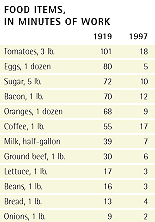
Similarly using work time as opposed to real prices, the 1997 Annual Report of the
Federal Reserve Bank of Dallas examined the declining costs of living over the past century
(W. Michael
Cox
and Richard Alm's "Time Well Spent: The Declining Real Cost of Living in
America" [pdf format]). For instance, whereas in 1916 it took the average worker
3,162 hours to earn enough for a refrigerator, 80 years later it took 68 hours.
Finally, a sense of timelessness seems to assist in getting consumers to
consume. Malls, like Las Vegas casinos, lack visible clocks.
- Robert
Sahr's Inflation Conversion Factors page (convert into 1998, 1997, etc. dollars)
- Buy
Nothing Day

POLITICAL TIMES
As is the case with the temporalities of other institutions, the
relationship between time and political systems is multifarious. So central
is time to political life that one of the first acts of the French Revolutionary
government was to create the Thermidor, an entirely new temporal reality
symbolizing individuality, secularity and rationality. It featured a 10-
day week (thereby eliminating Sundays), 10-hour days, and 100-minute hours.
In 1929, again to curb religious observances, the Soviet Union created
five-day weeks. Both temporal tamperings were to fail--unlike the November
18, 1883 introduction of four standard time zones in the United States.
CYCLES OF LIBERALISM AND CONSERVATIVISM
In his The Cycles of American History (Houghton Mifflin, 1986),
Arthur Schlesinger observes American cycles of "reform," with
renewed dedication to "public purpose," and "conservativism,"
featuring withdrawals to "private interest." Bursts of governmental
energe have occurred roughly every thirty years (Theodore Roosevelt in
1901, Franklin D. Roosevelt in 1933, Kennedy in 1961) alternating with
the conservative restorations of the 1920s, the 1950s and the 1980s.
One force undoubtedly underlying such shifts is economic. Kevin
Phillips, in The Politics of Rich and Poor: Wealth and the American
Electorate in the Reagan Aftermath (Random House, 1990), notes how
these times of private interests lead to increasing inequalities, leading
to depressions, Populism, and demands for wealth redistribution. Consider
the parallels between the 1980s, the 1920s, and the Guilded age:
- conservative Republican Presidents who bring tax cuts that lead
to a major redistribution of wealth, with high concentrations in hands
of top 1% and especially to tenth of the top one percent.
- extremely pro-business eras featuring the themes of less government
is better, greed is okay, and disbelief in labor;
- substantial reorganization of business and finance institutions;
- periods of economic disinflation featuring the bust of the commodities
market (e.g., TX & LA oil) and boom in finances;
- two-tier economy with strong regionalism;
- record levels of debt and speculation.
Click here to see
DAYLIGHT-SAVINGS TIME
More successful have been political attempts to implement daylight-savings
time, but not without a battle. In 1996, after 70 years of local experiments,
considerable controversy, and as a condition of the North American Free
Trade Agreement, Mexico finally went on daylight-saving time.
For the United States, it was the energy conservation needs of two
world wars (Roosevelt called it "War Time") that provided the
incentive to spring ahead an hour in April and to fall back an hour in
October. (The
Department of Transportation, in fact, oversees the uniform observance of daylight saving time in the U.S.)
But "Standard Time" often returned with peace. People
complained, for instance, that the government was tampering with "God's
time," that the extra hour of sunlight was upsetting livestock and
burning yards! A Congressional two- year experiment with year-round daylight-saving
time, beginning on January 6, 1974, lasted only one complaint-filled season.
The months falling within daylight-saving time were reduced between 1975
and 1987, when Congress passed an amendment to the Uniform Time Act that
gave most Americans
the current seven month daylight-saving time.
In September of 1991, Soviets turned their clocks back an hour to
correct a Stalin era mistake--officials had failed to return to winter
time after six months of daylight-saving time. When the country reintroduced
daylight-saving time and set clocks ahead an hour in the spring of 1981,
summer civil time became two hours ahead of solar-based time.
- The history of Daylight Savings Time and the
Uniform Time Act from the Library of Congress
- DST
page from University of Illinois Urbana-Champaign
Other topics in political temporalities:
- The inevitable life-cycle of the rise and fall of regimes, "injured
by time" as Aristotle put it.
- How voter apathy derives from high expectations and perceptions
of the slow pace of social change. For instance, some women complain about
the pace of change in female rights in the workplace and some African-Americans
complain about their pace of assimilation into the American mainstream.
- How needs for short-term payoffs (e.g., representatives having to
have something to show their constituencies every two years) have damaged
long-term political goals, undermining the values and institutions of stable
democratic regimes.
- The movement toward setting
term-limits for elected officials.
- The use of anniversary rituals to legitimate beleaguered regimes
(e.g., the Shah's celebrations of Iran's 5,000th anniversary, or the bicentennial
hoopla in this country in the wake of Vietnam and Watergate).
- The public-relations value of dispensing bits of time to special
interest groups (i.e., National Realtors Week, Grandparents' Day, National
Nursing Home Residence Day, National Family Week, and National Amateur
Wrestling Week).
-
Alan Benson's "I'm Dreaming of a White National Cheese Day: The
Selling of the American Calendar"
- Having trouble keeping track of all of those Presidential and Congressional Proclamation Days, Weeks, & Months?
Do you confuse National Ice Cream Day with National
Ice Cream Month? Click here.

TEMPORAL PERSPECTIVES
OF THE SCIENCES
Science gives us the ultimate of temporal
perspectives, ranging from the billion-year time frames for grasping the birth and death
of the entire universe to the nanosecond frames for grasping the the birth and death
of subatomic processes.

 Return
to Times of Our Lives Index Page
Return
to Times of Our Lives Index Page
 Social institutions are the broadest organizers of individuals' beliefs,
drives, and behaviors. Evolving to address the separate needs of society
(e.g., the military institution out of the need for defense; the family
out of the social needs for procreation, socialization, and intimacy),
social institutions are free-standing social units with their own inner
dynamics and rhythms. Like separate musical scores, each has its own melodies,
harmonies, and rhythms. The more powerful a given institution is in any
given society, the more likely its times influence everyday life. Many
researchers (see, for instance, the Foundation
For the Study of Cycles) have detected cyclical patterns of historical
change in these chronosystems.
Social institutions are the broadest organizers of individuals' beliefs,
drives, and behaviors. Evolving to address the separate needs of society
(e.g., the military institution out of the need for defense; the family
out of the social needs for procreation, socialization, and intimacy),
social institutions are free-standing social units with their own inner
dynamics and rhythms. Like separate musical scores, each has its own melodies,
harmonies, and rhythms. The more powerful a given institution is in any
given society, the more likely its times influence everyday life. Many
researchers (see, for instance, the Foundation
For the Study of Cycles) have detected cyclical patterns of historical
change in these chronosystems.



 Religious time is set up against profane time, time as wear-and-tear,
time as decay, time as death. The time frame of ultimate existence and
of moral truths must be of a different realm, and this is the sacred. Not
only does this supramundane orientation to time make death a transition
instead of an ending, but allows religions to conceptualize and integrate
the net sum of human activity. Our separate endeavors, as well as those
of our ancestors and successors, are but unrelated discrete events, much
like the separate notes of music, unless there's some overarching frame
of reference to integrate them into some harmonic whole. Part of the religion's
role is to give this broader temporal perspective to everyday life, to
provide the sense of coherency and comprehensibility to both personal and
social experiences, and to place generations now alive in context of those
dead and those yet to be born.
Religious time is set up against profane time, time as wear-and-tear,
time as decay, time as death. The time frame of ultimate existence and
of moral truths must be of a different realm, and this is the sacred. Not
only does this supramundane orientation to time make death a transition
instead of an ending, but allows religions to conceptualize and integrate
the net sum of human activity. Our separate endeavors, as well as those
of our ancestors and successors, are but unrelated discrete events, much
like the separate notes of music, unless there's some overarching frame
of reference to integrate them into some harmonic whole. Part of the religion's
role is to give this broader temporal perspective to everyday life, to
provide the sense of coherency and comprehensibility to both personal and
social experiences, and to place generations now alive in context of those
dead and those yet to be born.











